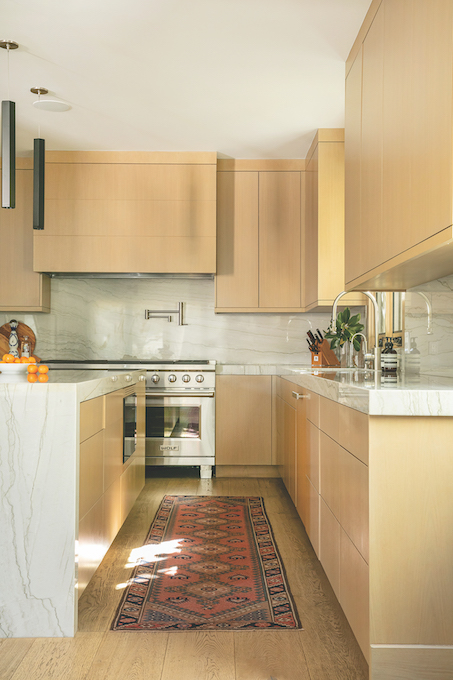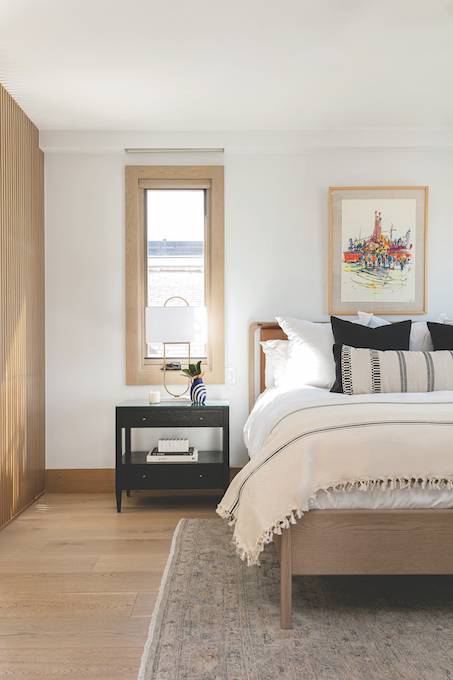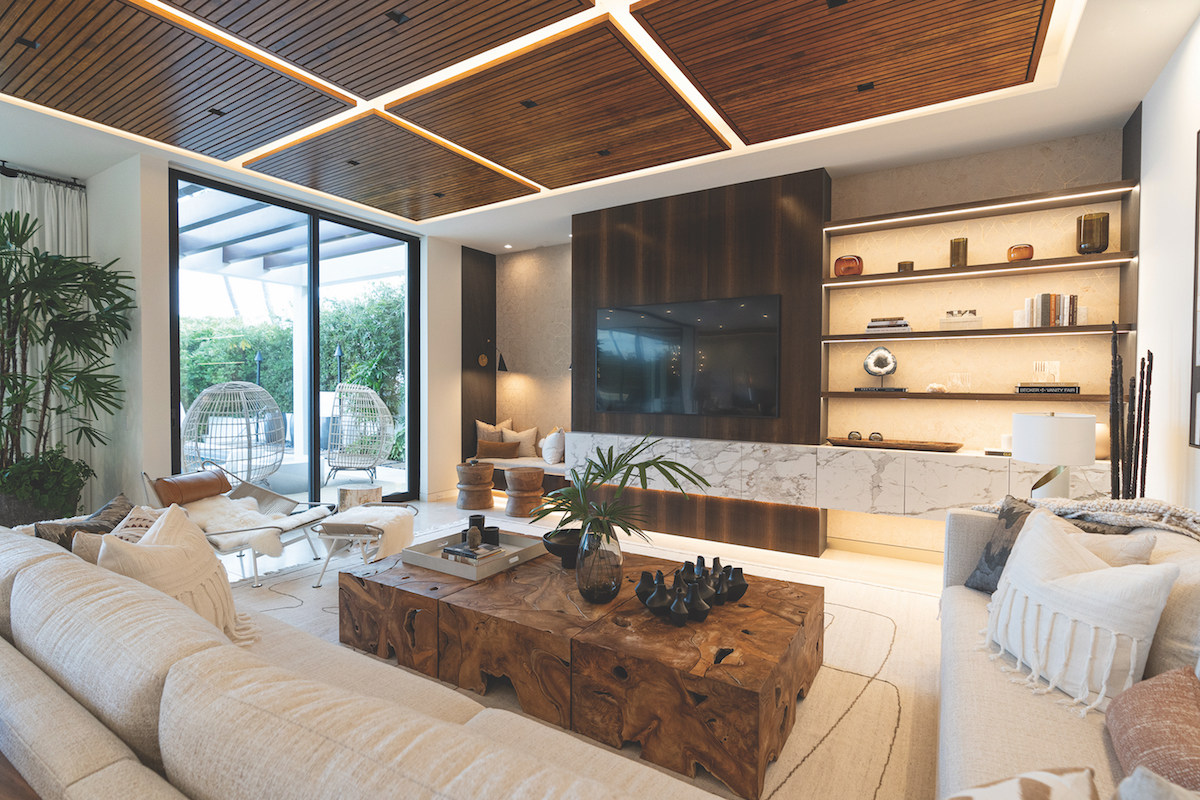
From design to construction, consider these elements to help create cleaner, less toxic living spaces.
By Elizabeth Nutt
Nearly four years ago, Laguna Beach-based interior designer Deana Duffek found herself chronically sick. After an arduous journey to get to the bottom of her symptoms, which included headaches and chronic fatigue, Duffek made the shocking realization that she was suffering from mold toxicity, caused by mold found in the heating and air-conditioning system throughout the home she was living in.
After moving, recovering and later purchasing a new home in south Laguna, Duffek saw the silver lining in what had happened to her: She decided to use what she had learned to help others. Duffek expanded her business, making it her mission to educate both herself and her clients on how to make mindful, research-backed decisions and changes to create living spaces that support whole body wellness. She has even opened a showroom, Pure Design House, as a resource for others.
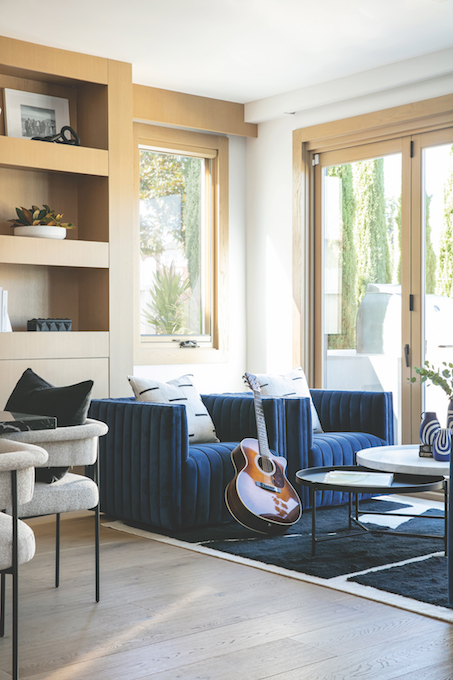
Duffek, owner and principal designer of Pure Design House and Duffek Design & Development, is joined by others in the area who are prioritizing creating beautiful home environments that don’t compromise health and wellness. Natural living spaces are a growing trend in home design that is undoubtedly gaining traction as more research is made available about how products are made and the myriad invisible dangers that potentially lurk in everything from insulation to bedding.
Here, local designers weigh in on how to detoxify your digs, whether through small, simple changes or a total home transformation.
A Fresh Start
Over the past few years, Duffek has been working tirelessly with a curated team to create what she refers to as a “clean home,” which will serve as a prototype for clients, designers and other community members who utilize this new showroom.
“I became really sick and it caused me to press pause with my design business and take a look at the materials we were using and really start to dive into nontoxic materials, and not just clean and environmentally friendly, but healthy for the body,” Duffek says, adding that while clients’ ideas of health and wellness may vary, her goal is to ensure that every detail is as clean and nontoxic as possible to achieve a healthy living space. She starts by offering an initial home consultation and begins planning from there.
According to Laguna Beach interior designer Lisa McDennon, owner of the eponymous Lisa McDennon Design and the home and lifestyle boutique, Nuance, demand for these types of living spaces is increasing steadily among her client base. “With people spending more time at home, there is a desire to create a haven that is not only clean and germ-free but also a healthy sanctuary,” McDennon says. “Yes, aesthetics are important, but creating a harmonious space is also about creating a space that promotes well-being and is supported by a healthy atmosphere.”
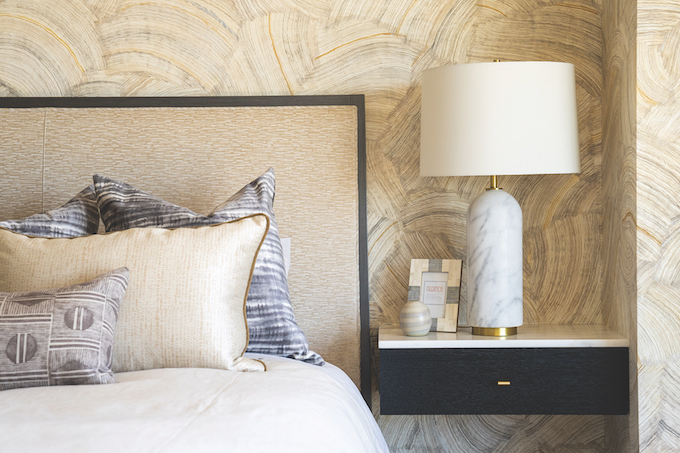
To that end, awareness around volatile organic compounds is at the forefront of the healthy home movement; VOCs are the fumes released into the air (through off-gassing) from chemicals like formaldehyde that can be found in countless manufactured items around the home, and which are known to contribute to indoor air pollution and can cause cancer and other health problems. “One example I like to use is a lot of people put insulation in their walls, and they can spray it on or roll it in sheets, but oftentimes those [products] are covered in formaldehyde. There are other solutions we can utilize, like New Zealand wool,” Duffek says.
Another common culprit is flooring: For example, some engineered wood and laminate flooring can be high in VOCs due to the adhesives, glues and finishes used in manufacturing or installing, so it’s important to read up on different options before making a decision.
McDennon recommends looking into natural flooring materials like hardwood, stone and terra cotta, but says popular luxury vinyl tile—a cost-effective and durable flooring that looks like wood—can be a good choice in many circumstances. However, since vinyl products in general can off-gas, someone who is concerned about this should read the product’s labels and search for brands manufactured with fewer chemicals. “Be sure to research your options and look carefully at how it’s made,” she says.
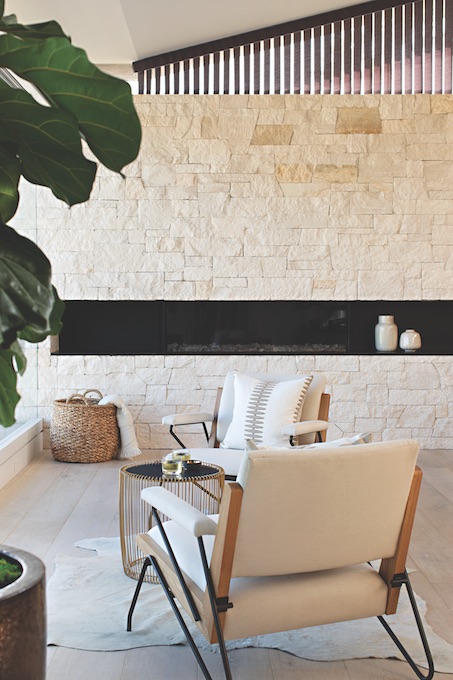
Perhaps the most obvious must-haves when creating a purified space are, of course, healthy air and water. One of the top design elements that Lisa Berman, founder and principal designer at Laguna-based Studio Gutow, has seen being implemented into homes today to create healthier environments are high-end air purification systems. “These systems go beyond standard air filters, using advanced technology to remove allergens, pollutants and even viruses from the air,” Berman says. For her part, Duffek strongly recommends purchasing and installing a water filtration system, especially one that uses reverse osmosis, which is considered one of the more efficient ways to eliminate contaminants from drinking water.
Furniture, too, plays a large role in the overall health of a home, given its size and the number of pieces most homes contain. “Clients are opting for furniture made from sustainably sourced wood and nontoxic finishes, and pieces made without formaldehyde-based adhesives are a priority,” she says. (One way to avoid purchasing toxic furniture is by looking for pieces that are Greenguard certified by UL Solutions, which means items have been screened for certain chemicals and VOCs, meeting a stricter set of safety standards).
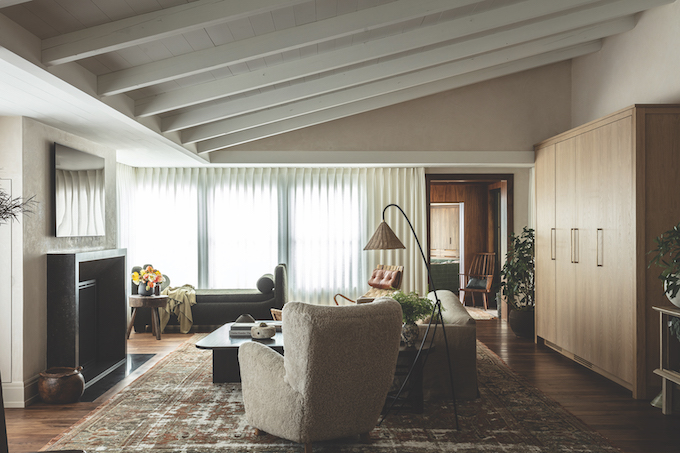
Notably, in May, Duffek opened the doors to her north Laguna showroom, Pure Design House, which does this research and legwork for clients and shoppers, featuring sustainable furniture in addition to other mindful building materials and furnishings. Each piece in this showroom at 427 N. Coast Highway, is displayed with a card that offers details about the item, who designed it and where it came from; much of the furniture is Scandinavian. Anyone may visit without an appointment to get ideas for creating a healthier home.
“Everything in our showroom is sourced responsibly and vetted to make sure that it is made from all nontoxic, clean and sustainable materials. … We work with industry experts to help us with our vetting and sourcing of nontoxic building materials and furnishings. We look at pollutants, like off-gassing, and everything from how things are manufactured to what glues they use,” Duffek says.
Detox in the Details
Of course, a complete renovation or furniture overhaul isn’t feasible for many. “Paint is one of the easiest changes to implement. Plus, you can change any home with [new] paint color,” says Duffek, who recommends nontoxic limewash paint, common in European homes for hundreds of years and which she opted for in her own home. Limewash, made by crushing and heating limestone and mixing it with water and natural pigments, is brush-applied and not only creates a unique texture and aesthetic, but it’s also about as natural and eco-friendly as it gets: It contains zero VOCs and its high pH level means it can even help fight mildew and bacteria. Duffek also likes American Clay’s sustainable clay plasters, a nontoxic alternative for interior walls.
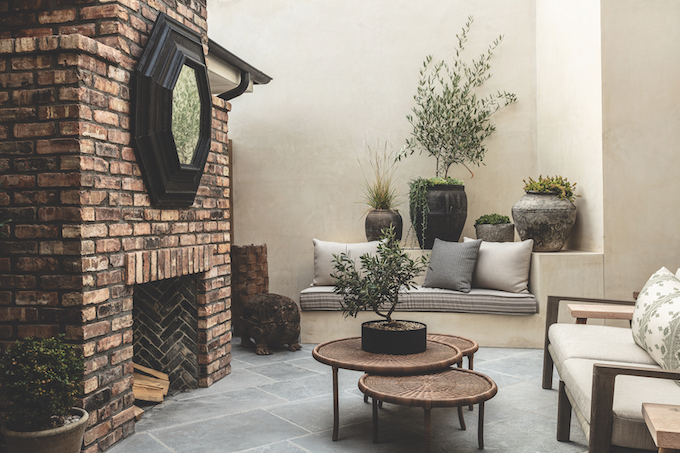
Berman and her clients, too, opt to look well beyond aesthetics when it comes to deciding what’s going to decorate their walls and floors. “Paints and wallpapers with low-VOC content are becoming increasingly available, offering a healthier alternative to conventional options,” Berman says, adding that carpets and rugs made from natural fibers or those with low-VOC emissions are gaining popularity and are an easy-to-implement switch. “Natural fiber rugs … [made from] materials like jute, sisal or wool, which are sustainable and emit fewer chemicals compared to synthetic options,” Berman adds.
All three designers agree that bedding is both a highly accessible and critical area to consider when it comes to purifying and detoxing. “We spend a lot of time in bed sleeping and want those restorative hours to be as healthy as possible. So, our mattress and bedding selections become an important part of providing a nontoxic home,” McDennon says.
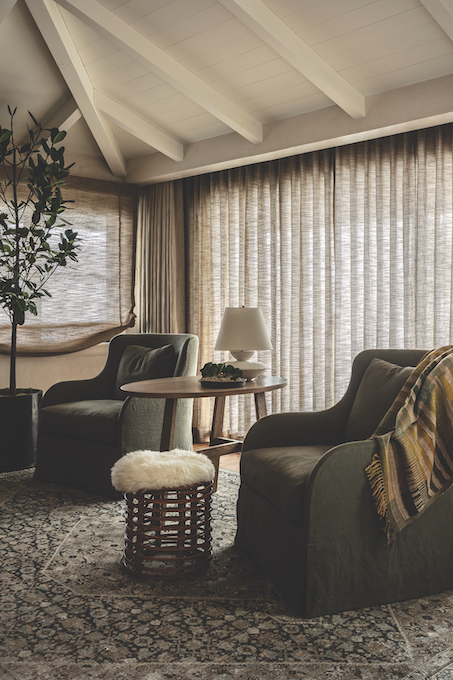
Simply swapping out conventional mattresses, many of which are laden with toxic materials, for one made with organic materials like latex, cotton or wool, has a big impact. Berman’s clients, too, are reaching for bedding made from organic cotton, bamboo and other natural fibers. “These materials are hypoallergenic, breathable and free from harmful chemicals commonly found in traditional bedding,” Berman says.
McDennon adds the following advice: “When shopping on your own, it’s important to carefully read labels and make sure your bedding is all natural. Just because it feels soft does not mean it’s all natural and without chemicals. Look for certified organic labels and stay away from linens treated with fire retardants, as those are the worst offenders.”
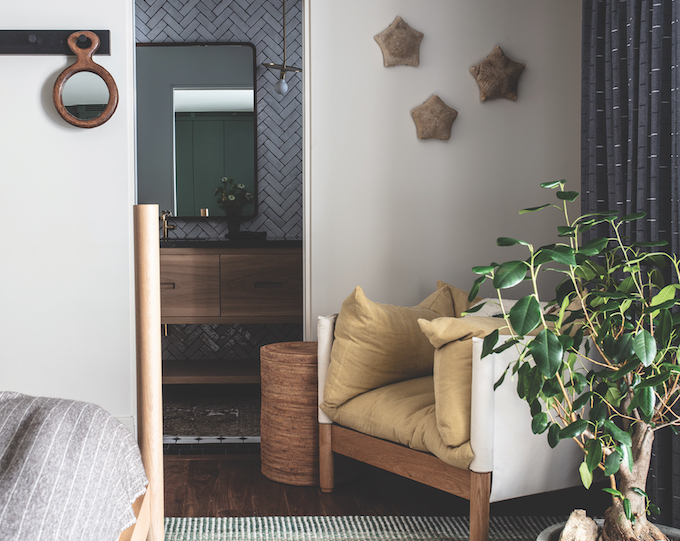
Even the smallest decorative items can make an impact on lowering the number of toxins in your home. “Incorporating interesting indoor plants not only enhances aesthetics but also improves indoor air quality and reduces stress,” Berman suggests. Meanwhile, McDennon loves a good nontoxic candle: Nuance’s Kobo candles, which are made with 100 percent sustainably sourced, non-GMO wax and boast lead-free wicks and phthalate-free fragrances that smell great, are among the shop’s bestselling items.
With countless options available and endless opportunities to detox or replace what you have with something cleaner, it’s easy to feel overwhelmed. But Duffek says that starting somewhere—making just one small change—is what matters. “And it doesn’t mean it has to be more expensive,” she says. “It’s really just about educating ourselves.”


